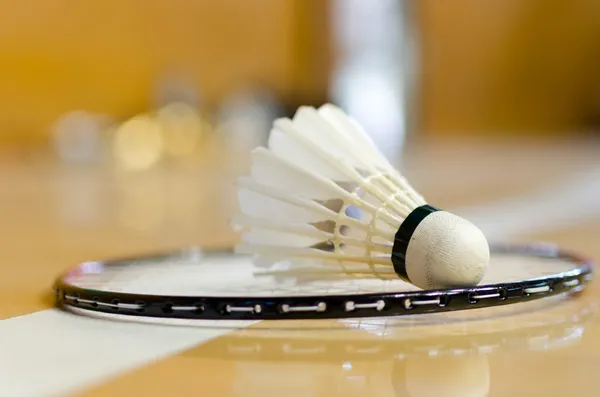Surakarta, PT SOLO ABADI INDONESIA – Greetings, Sobad Solid! Solo Abadi team had the opportunity to collaborate with Mr. Wijianto, S.Ft.,Ftr., M.Or as a Physiotherapy Lecturer at Muhammadiyah University of Surakarta (UMS) Competence in FT Sport and Wellness in writing an article on the topic of Anthropometry in Sports.
In order to maintain a healthy body we need to do sports activities, namely activities that use a lot of physical movement to maintain physical health. It is important to pay attention to the tools used in order to optimize the sports activities that we do. Especially in badminton, which uses a lot of movements such as jumping and moving agilely. Therefore, it is necessary to minimize the occurrence of injuries by paying attention to anthropometry in designing sports equipment used in badminton.

So what exactly is anthropometry and its role in badminton? Mr. Wijianto, S.Ft.,Ftr., M.Or or who is familiarly called Mr. Wiji explained the role of anthropometry in badminton sports activities in an article sent to the Solo Abadi editorial team on Monday (13/12/2021)
What is Anthropometry?
The word Anthropometry comes from the Greek term “Anthropos” which means human and “Metron” which means measurement, thus anthropometry has the meaning of measuring the human body (Purnomo, 2013). Anthropometry is a measuring tool used to measure the human body, including measuring width, length, circumference, diameter and calculating the proportions of the human body.
Information about the basic structure of the body structure can be used as an estimate of the forces acting on muscles, joints and other body tissues (Adrian MJ, 1995). According to (Putri, 2020) there are six measurement methods in anthropometry, including:
- linear dimensions (height),
- body circumference, skin layer thickness,
- angle (Scope of Motion of the Joint),
- body shape,
- body contour,
- weight
Anthropometry is widely used as an ergonomic consideration in the process of planning (design) products and work systems that will require human interaction. Anthropometry has an important role in almost all aspects of life, including sports. Anthropometry is an important aspect for an athlete, this is because anthropometry is related to the proportions of the athlete’s body which will affect performance.
Athlete Body Composition
The body composition of an athlete must be ideal and appropriate for the sport. According to Rahmawati (1996: 72) in her research, “Many experts argue that a person’s achievement depends on the size, shape, proportion, composition, maturation and function of organs.” Therefore, each sport in order to improve performance must be supported by taking measurements to determine body measurements or anthropometric measurements in athletes. Anthropometric measurements are needed to measure the physical condition of an athlete, research on the application of anthropometry in the sports field includes body proportions, performance and biomechanics (NT, 1996)
Anthropometry in Badminton
Badminton is one of the most popular sports and can be played by anyone regardless of gender, age or skill level (Ooi et al., 2009). The level of expertise in this sport is divided into two, namely amateur players and professional players (Fu et al., 2017). Between amateur and professional players there are differences in terms of kinetics and kinematics when carrying out movements and there are differences in fitness levels, cardiovascular levels, muscle strength and anthropometric profiles (Zhao & Li, 2019)

Achievements and wins in badminton sports competitions are influenced by several factors as following :
- Skills,
- posture and body composition,
- strategy,
- tactics.
Athletes’ sports performance in the field is also influenced by other factors such as physical, psychological conditions (intelligence, personality, and motivation) and body characteristics (morphology, body composition and anthropometry).
Badminton athletes use the upper extremities more when playing than the lower extremities, in this sport there is minimal physical contact, but this does not necessarily make a badminton athlete avoid the possibility of sports injuries. Posture and body composition greatly affect the risk of injury in badminton athletes, low body weight, long legs and strong arm muscles are more beneficial in this sport. According to (Maulina, 2018) the height of a good badminton player is around 175 cm with an estimated shoulder height as high as the net (between 152.5-155.0 cm) so as to allow the greatest variety of strokes.
Why is Anthropometry Important in Badminton?
As mentioned earlier, badminton athletes need excellent performance in competing. The slightest injury will certainly affect the athlete’s playing condition. For this reason, minimizing the possibility of injury is very important, one way is to pay attention to the anthropometry of the athlete, using tools and facilities that are adapted to human anthropometry. Moreover, anthropometric factors are also one of the determinants of team performance in badminton matches, as explained by Mr. Wiji as a lecturer in the UMS physiotherapy study program.

“Although it is not the only factor that determines victory in a match, a person’s anthropometry plays a role in energy efficiency during play, for example, a player who has a high height will make it easier to reach the ball, an ideal body weight also participates in facilitating the athlete’s movement. in the field.” concluded the Physiotherapy Lecturer
That was our discussion about the role of Anthropometry in Badminton with Mr. Wijianto, S.Ft.,Ftr., M.Or. Hopefully it can be useful and enough to answer the confusion of solid friends so far, see you in the discussion article with other lecturers!
About PT SOLO ABADI INDONESIA
PT Solo Abadi Indonesia is a company that located in Surakarta, Central Java. Focused in manufacturing field and is the biggest measuring tool producer in Indonesia established since 2005. Products by Solo Abadi such as anthropomethric chair and portable anthropomethry is applicable in several studies, such as health, anthropology, sports, forensic, industrial engineering. Solo Abadi also supports stunting prevention from an early age by providing stunting kit products to monitor baby growth and development, one of the products that is a part of stunting prevention efforts is an infantometer board to measure infants aged from 0 to 2 years.
For further information you could contact our email admin@soloabadi.com or through our WhatsApp 08510888111 \
Journalist : Aisyah Yuri Oktavania


